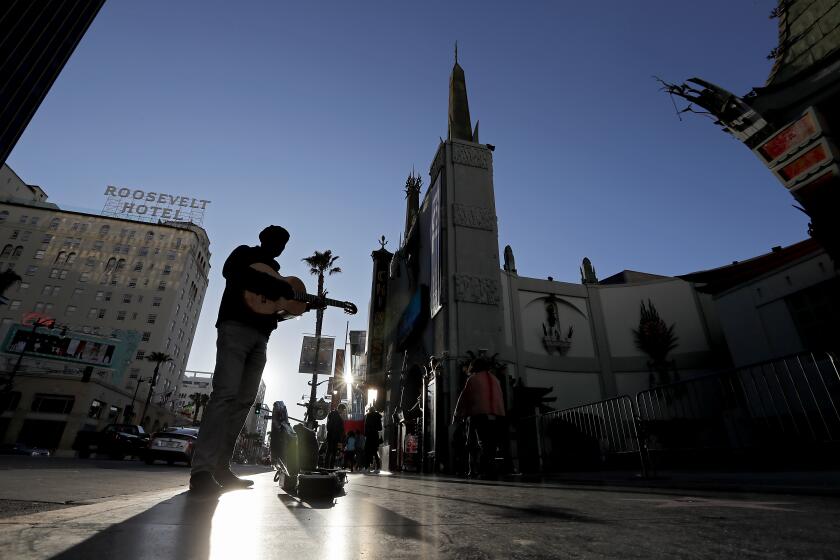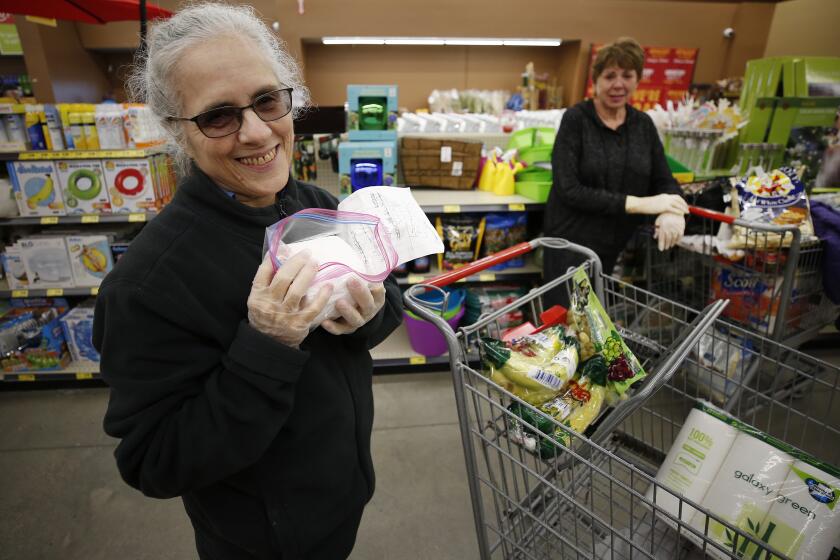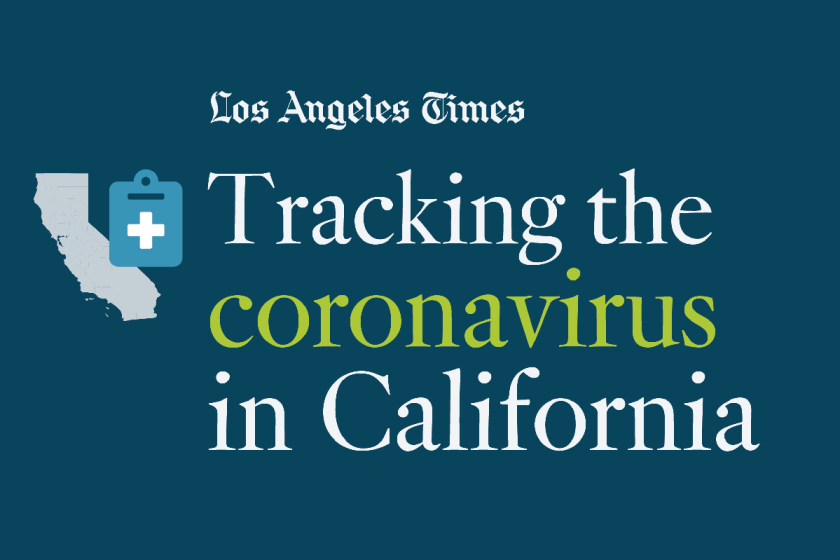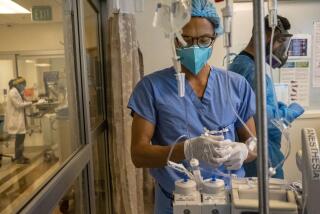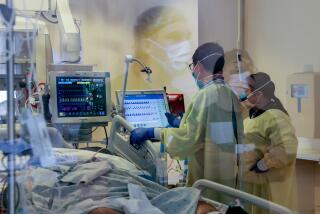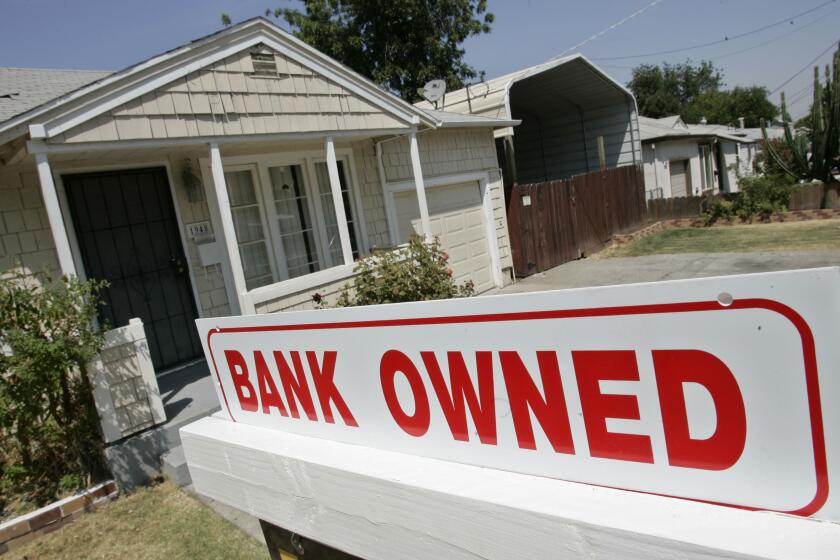California hits 17 deaths as L.A. County confirms 46 new coronavirus cases
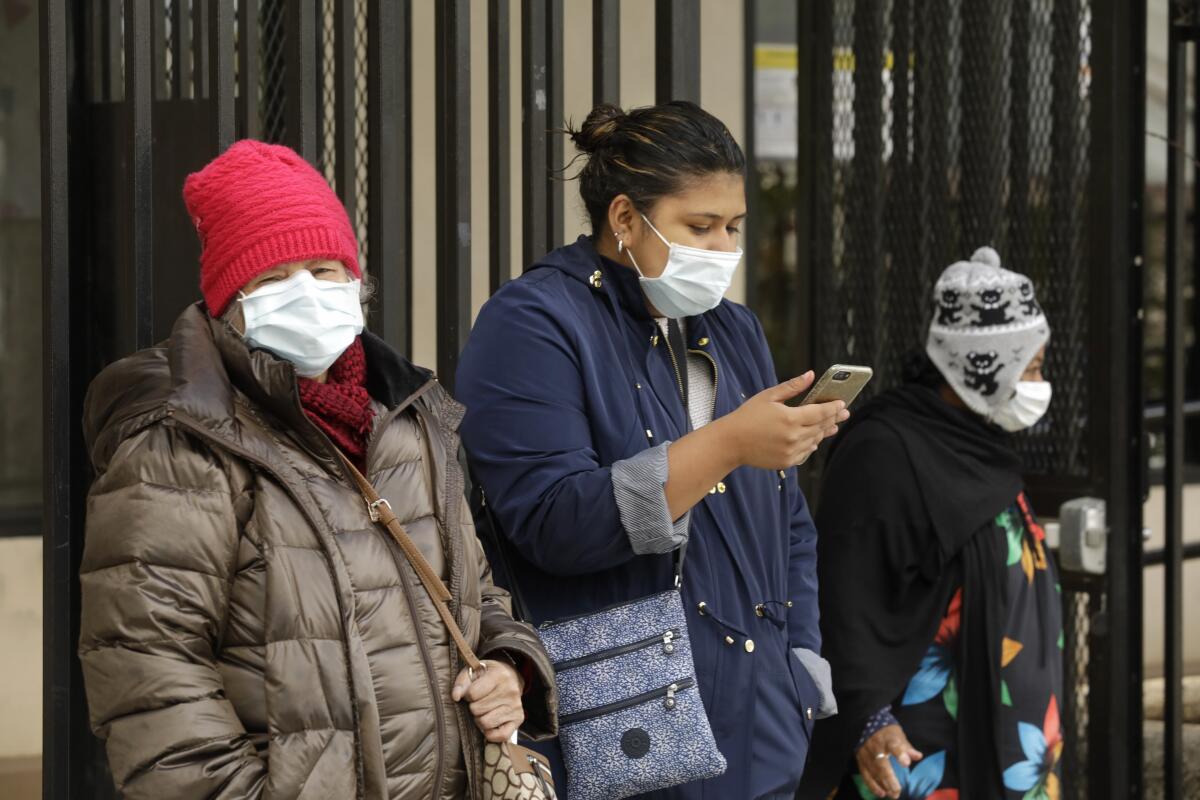
With nearly 9 million Californians living under orders to stay home as much as possible, state and county leaders are preparing for what could be next in the coronavirus pandemic.
Gov. Gavin Newsom on Wednesday evening said the state has asked the Department of Defense to deploy the Navy’s Mercy hospital ship and two mobile hospitals to California to help care for the expected surge in hospitalizations of residents stricken by the novel coronavirus.
The governor said the state is working to expand the state’s available hospital beds by roughly 20,000, the number needed if more than half of Californians come down with the coronavirus.
“If you assume for every individual that’s contracted the virus that they impact two individuals and we have hospitalization rates as high as — in some instances we model — 20%, that would require a broader surge capacity of our healthcare delivery system, north of 19,500 additional beds,” Newsom said.
Here’s a visual look at how life in Southern California has changed during the coronavirus crisis.
That’s only one of many scenarios — some modest, some more extreme — that state emergency officials are running to increase the number of available beds should COVID-19 cases and a need for hospitalization rapidly increase in the coming days. The state estimates that surge capacity in California’s existing hospital system could accommodate 10,000 patients.
The state also is in the process of procuring two hospitals that are currently nonoperational, one in Southern California and one in Northern California, along with leasing hotels and motels where coronavirus patients could be housed and treated.
If requests for the military medical assistance are granted, California should be close to reaching the 20,000-bed threshold, Newsom said.
During a CNN interview Wednesday night, U.S. Defense Secretary Mark Esper said the Mercy and another Navy hospital ship will be deployed to help respond to the coronavirus crisis.
The hospital ships, however, will not accept coronavirus patients, he said. Instead, they will accept patients with other illnesses, freeing up capacity in medical centers.
Esper said military field hospitals also will be provided to states but, again, will not treat coronavirus patients.
Los Angeles expects more cases
Los Angeles County on Wednesday confirmed 46 new cases of the novel coronavirus, including eight in Long Beach and two in Pasadena. The new cases bring the county’s total to 190.
All new patients have been isolated, and their close contacts are being quarantined, said Barbara Ferrer, director of the L.A. County Public Health Department.
The number of those who have tested positive for the virus that causes COVID-19 is expected to increase over the next several weeks, health officials warned.
“We’re going to see an increase in positive cases today, tomorrow and for the foreseeable future,” Ferrer said. “We cannot stop the spread of COVID-19. All of our strategies are aimed at slowing the spread.”
Ferrer directed anyone feeling overwhelmed by the situation to contact the county’s Department of Mental Health at (800) 854-7771.
Testing capacity increases
With confirmed coronavirus cases spreading rapidly and reaching all 50 states, almost 9 million Californians are living under shelter-in-place orders.
The extraordinary measures were designed to slow the spread of the coronavirus. California has seen the number of confirmed cases continue to rise: at least 836 cases and 17 deaths as of Wednesday, compared with 157 cases and three deaths the week before. Nearly 12,000 people in the state are self-monitoring for symptoms.
The jump is largely due to a recent increase in testing capacity, and the numbers are expected to continue rising. On Tuesday, the U.S. Public Health Service reported that more than 58,778 individuals had been tested throughout the country — almost 32,000 at public health labs and roughly 27,000 at clinical labs. More than 8,000 of those tests had occurred over the course of a day.
Retailers are setting aside time for seniors and other vulnerable populations to do their shopping in a less-crowded environment.
Officials said they are racing to get more coronavirus testing done so they have a better sense of how many people have the virus — but that effort remains painfully slow.
In the meantime, they are pushing people to stay home to avoid spreading the virus and overwhelming hospitals.
California counties are continuing to report a rise in individuals who have tested positive.
San Mateo County on Wednesday reported 16 more cases of COVID-19, bringing the county’s total to 81, including one death. Santa Clara County reported one more death, bringing the county’s total to six, the most in any region of the state. The latest death was a man in his late 60s.
San Joaquin County reported its first two deaths, and Long Beach confirmed two new cases, bringing the city’s total to 10 cases, according to health officials. That tally does not include a patient at a U.S. Department of Veterans Affairs hospital who also tested positive, because that person is not a Long Beach resident, a city spokesman said.
The Riverside County Department of Public Health also confirmed a new COVID-19 patient, the first case identified in the city of Corona. The individual is a man in his 70s, health officials said.
Orange County announced 13 more confirmed cases, bringing the total count to 42.
The latest maps and charts on the spread of COVID-19 in California.
Extraordinary measures
At least 16 counties, most in the Bay Area, as well as the city of Palm Springs have ordered all residents to stay at home as much as possible.
On Wednesday, Lake, Mendocino, Napa, San Luis Obispo, Solano and Yolo counties joined Sonoma, San Benito, Monterey, San Francisco, Santa Clara, San Mateo, Alameda, Contra Costa, Marin and Santa Cruz counties, which previously had given shelter-in-place orders.
“This is already a painful situation for many families and businesses. And make no mistake about it, it’s going to get worse before it gets better,” state Sen. Bill Dodd (D-Napa) said at a news conference. “But this is an opportunity to move in the right direction, to flatten the curve.”
In Ventura County, health officials announced a shelter-in-place order Tuesday that applies only to older residents.
In total, about 20% of the state’s population is under shelter-in-place orders.
Such orders direct the public to stay at home as much as possible, with exceptions such as going out to get food, picking up prescriptions, buying gas, going to the bank or checking on relatives.
Without calling it an official shelter-in-place order, Sacramento County officials recommended that residents stay at home as much as possible.
Southern California authorities similarly stopped short of shelter-in-place orders but have still imposed sweeping restrictions. San Bernardino County issued a new order Tuesday that bans all gatherings, a day after Riverside County banned gatherings of 10 or more people and L.A. County prohibited gatherings of 50 or more people. San Diego County issued a ban Tuesday prohibiting gatherings of 50 or more people.
On Wednesday, Orange County leaders held a news conference to clarify the health order issued Tuesday and calm business owners.
After Tuesday’s order was released, many residents and members of the media read it as a shelter-in-place order. The county reissued its order Wednesday, rewritten to make it more clear which businesses fell under the mandate. Local leaders stressed that it was not a shelter-in-place order but rather that residents are asked to avoid large gatherings and practice social distancing and good hand hygiene.
“There has been confusion about the wording and meaning of yesterday’s public health order, but let me make it very clear — Orange County is not on lockdown, and except for businesses directed to close by the state, all businesses can remain open,” Orange County Board of Supervisors Chairwoman Michelle Steel said.
Besides the 16 counties imposing a shelter-in-place order, enforceable as a misdemeanor, Los Angeles, Orange, San Bernardino, Ventura and San Diego counties ordered restaurants to end dine-in eating and required them to offer only pickup and delivery service.
Los Angeles, Orange, San Bernardino, Ventura and San Diego counties ordered bars that do not serve food to close; Orange, Ventura, San Bernardino and Los Angeles counties also ordered gyms and movie theaters to close.
In light of public gathering restrictions, Catholic Church officials throughout the state have suspended Mass services. Following decisions from the Los Angeles Archdiocese and the San Jose Diocese, the Diocese of San Bernardino announced Tuesday night that it would do the same, suspending services at all parishes, missions, chapels and hospitals. Instead, it will turn to online services, as many other churches have done, and regularly livestream Mass celebrations.
California State Parks closed all campgrounds Wednesday because of the coronavirus, but hiking trails and beaches remain open. Outdoor spaces also remain open in local and national parks, but many services have been suspended.
Schools remain closed
Newsom confirmed Tuesday that California public schools are likely to be closed for the remainder of the school year in response to the coronavirus.
“Don’t anticipate schools are going to open up in a week. Please don’t anticipate in a few weeks,” Newsom said during a Sacramento news conference on the state’s coronavirus efforts. “I would plan, and assume, that it’s unlikely that many of these schools — few, if any — will open before the summer break.”
Nearly all school districts in the state — 98.8% — are closed in response to the pandemic, Newsom said. The state Education Department is assembling detailed guidelines on how schools can attempt to continue teaching 6.1 million students out of their classrooms in the weeks and months ahead.
The school closures present a hardship for children from low-income families in a state where 60% of students qualify for free or reduced-price meals. In Los Angeles public schools, the number is even higher: 80%; in Compton, it’s 83%; and in Pomona, 89%.
State Supt. of Public Instruction Tony Thurmond said Tuesday night that Newsom’s comment offers an assessment of the future school year with closed campuses, but as of now “there is no declaration that school is over for the year.” He said school districts need to be prepared to shift their method of instruction.
He added that officials have not yet discussed the potential option of extending the school year into the summer.
“We’re not going to know exactly what we need to do until we have a sense of how this is all going to go,” Thurmond said.
Newsom acknowledged the challenging road ahead and said that standardized testing will not take place this spring. “We think it is totally inappropriate for kids to worry” about being tested, he said. Teachers and students “already have enough anxiety,” he said.
Universities across the state have moved to online learning, and some are grappling with ways to calm their campus communities after students and staff members have tested positive for the virus.
UCLA officials confirmed Tuesday that a student who lives off-campus tested positive and is receiving care at a hospital. A university staff member has also tested positive for the disease caused by the coronavirus. UCLA Chancellor Gene Block, who was in contact with someone who has the virus, has self-quarantined but is not showing symptoms.
“As testing for COVID-19 in the United States becomes more widely available, we will see local health centers administer more tests,” Block wrote in a news release. “As a result, we should prepare ourselves to expect the number of self-quarantine cases, like mine, and confirmed cases to increase in the weeks and months ahead — not only across the nation, but also at UCLA.”
To limit the spread of the new coronavirus, UCLA announced Wednesday that its spring commencement ceremonies will be conducted through virtual events.
“Please remember that, even for an event as momentous as commencement, the day does not define the journey,” Block said in a statement.
Economic toll
The Los Angeles City Council pushed forward dozens of proposals Tuesday meant to help Angelenos cope with the spread of the coronavirus and protect them from its effects, including plans to boost sick leave, enshrine recall rights for workers who are laid off, and provide financial assistance to struggling businesses and tenants.
“This pandemic has touched every corner of the world, and it is increasing at a global scale like we’ve never seen before,” City Council President Nury Martinez said at the beginning of a marathon meeting that lasted into the early evening. “We are in uncharted waters, and it is up to us to make sure we are doing our duty as public servants.”
Martinez asked city staffers to report back on creating an emergency program that would provide at least 14 days of paid sick leave to Angelenos during a public health crisis or major disaster. Los Angeles already requires sick leave for employees working in the city, ensuring that they can accrue and use up to 48 hours of paid leave — six days — per year.
Council members also introduced new proposals to set up loans and grants for businesses affected by the pandemic and to explore other business assistance, such as easing taxes and fees. Early in the meeting, restaurant owner Tricia La Belle addressed the council and said the shutdown of dine-in service had put her in financial jeopardy.
On Wednesday, the city of Long Beach announced a moratorium on residential and commercial rent evictions due to lack of payment, as well as the establishment of an emergency loan assistance program to small businesses that have suffered losses and a review of sick and disability leave processes.
More cities will probably follow suit in the coming days as residents who worked in now-closed establishments grapple with how to maintain a semblance of their pre-pandemic lives.
In his Facebook Live broadcast Wednesday, Newsom provided a striking example of how COVID-19 has already had a significant economic effect on thousands of residents.
On average, California sees 2,000 unemployment applications a day.
Two or three days ago, the state received 40,000. On Tuesday, 80,000 applications were filed.
Times staff writers Luke Money, Phil Willon and Jaclyn Cosgrove contributed to this report.
More to Read
Start your day right
Sign up for Essential California for news, features and recommendations from the L.A. Times and beyond in your inbox six days a week.
You may occasionally receive promotional content from the Los Angeles Times.
